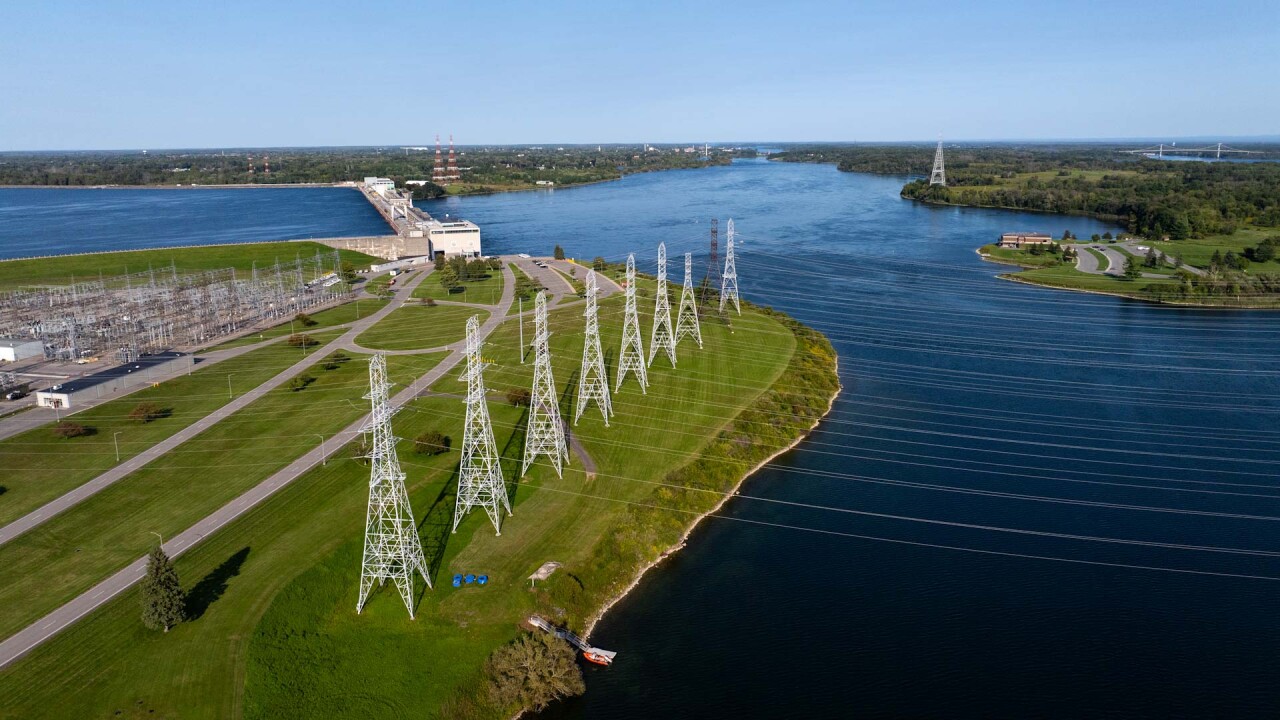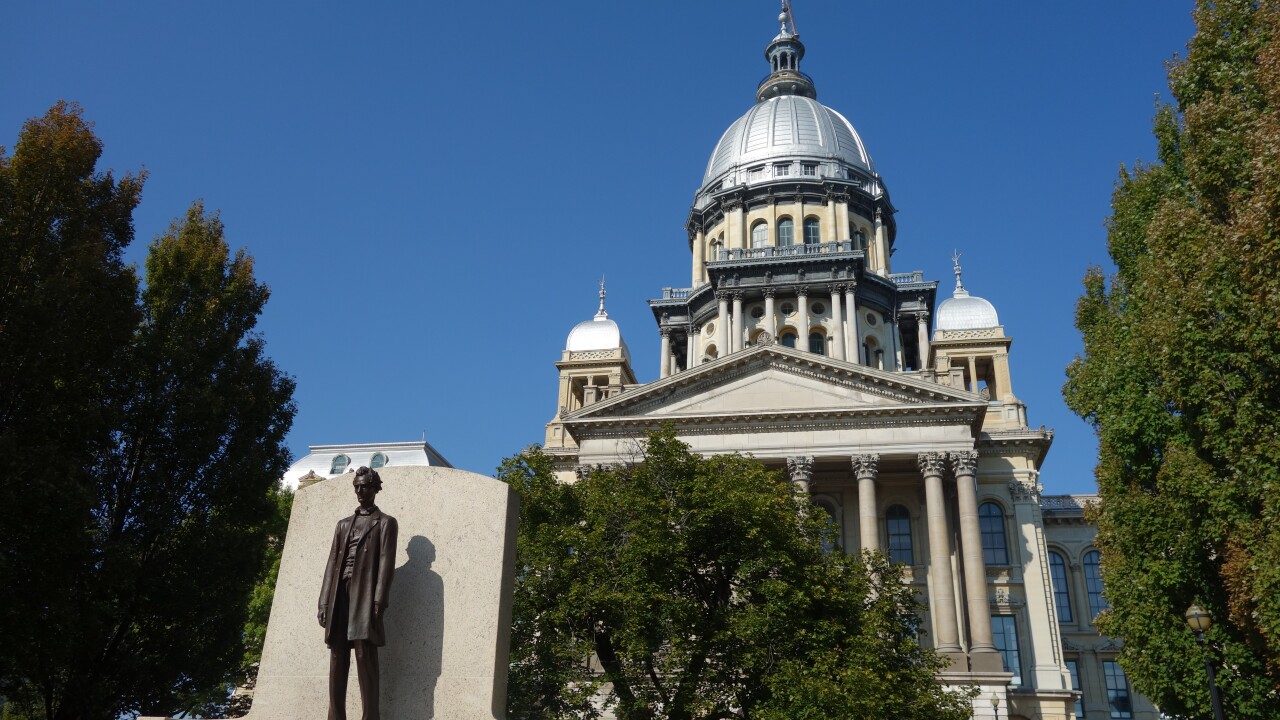The Illinois State Toll Highway Authority will head into the market next month with an upgrade from Moody’s Investors Service in tow as traffic levels rebound from a COVID-19-driven dive and worries have let up over the state’s pandemic strains.
The authority’s upcoming sale of $600 million will help finance the agency’s ongoing 15-year, $14 billion Move Illinois capital program. Loop Capital Markets LLC and J.P. Morgan Securities are senior managers with Loop running the books.
Ahead of the sale, Moody’s Investors Service raised the rating to Aa3 from A1 and assigned a stable outlook to the deal and $6.4 billion of outstanding bonds. Fitch Ratings and S&P Global Ratings affirmed the agency’s AA-minus rating and stable outlook.
Like other toll roads across the country, Illinois’ system has seen traffic recover from a deep drop off in 2020, but a central factor also driving Moody’s action comes from its June upgrade of the state to Baa2 from Baa3 due to $8 billion of federal relief and rebounding tax collections.

“The state's credit challenges that stem from the state's very large unfunded post-employment liabilities remain; however, the improvement in the state's financial profile lowers the likelihood that it would attempt to look to the tollway to assist with non-system liabilities,” Moody’s said.
The tollway operates as an independent agency by state statute and toll revenues are pledged first to operations and debt repayment. A 2016 constitutional amendment installed a lock box on transportation revenues so that they can only be spent on transportation-related uses. But Moody’s believes risk remains as the General Assembly could take actions to remove the authority’s autonomy in the event of severe state stress.
“This ratings upgrade is an affirmation of our strong recovery from the economic impact of the COVID-19 pandemic and indicates that the Illinois Tollway is in a strong financial position as it moves forward with" the Move Illinois capital program, Executive Director José Alvarez said in a statement.
The authority last month released a proposed $1.49 billion budget for 2022 that will receive a public hearing this month and will then be finalized ahead of a December vote by the authority’s board.
The budget relies about $500 million of new-money borrowing in the third quarter of 2022 to support the ongoing 10-year-old capital program.
“That timing and the amount are dependent on the rate of capital spending during 2022 and the final par amount of the bonds to be issued later this year,” the authority said. “A financing team has not yet been assigned for the 2022 new-money issue. It is uncertain if underwriters for that transaction would be assigned from existing pools (whose term is scheduled to end October 2022) or per a new procurement process.”
About $2.2 billion of additional borrowing is planned through 2024, including the
The authority has authorization to issue up to $900 million of refunding bonds for savings and a restoration of the ability to advance refund would increase the likelihood that the Tollway would use most or all of that authorization in 2022, the agency said. Prospects for the restoration of advance refunding
The proposed budget earmarks $411 million for annual maintenance and operations on the 294-mile system that spans 12 counties in northeast Illinois and $1.08 billion for direct funding and debt service on capital investments. Revenue is anticipated to rise by 5.4% next year. Commercial truck toll rates will rise under a previously approved schedule adopted in 2008. Passenger vehicle tolls will remain steady.
Capital spending totaling $1.49 billion is planned. The authority anticipates spending $296.8 million for system wide roadway and bridge repairs. Another $690 million will be spent to continue design and reconstruction work for the Central Tri-State Tollway Project and $46.2 million to complete construction of the I-294/I-57 Interchange.
Another $440 million will go to continue planning and construction for the new I-490 Tollway and new interchanges connecting to the Jane Addams Memorial Tollway, Tri-State Tollway, the Illinois Route 390 Tollway, as well as providing direct access in and out of O’Hare International Airport as part of the Elgin O’Hare Western Access Project.
The authority adopted the $12 billion, 15-year “Move Illinois” program in 2011, raising rates to finance it. The board raised the size to $14.3 billion in 2017. The program earmarks $10 billion for improvements to the existing roadways and $4 billion for expansion.
Moody’s upgrade restores the rating to its 2019 level before it knocked it down over
“While there is currently no provision for states to pursue a bankruptcy filing, in times of financial stress a state could pursue actions not contemplated under current laws,” Moody’s said in the May 2019 downgrade. “This risk suggests a closer alignment of ISTHA's rating with that of the state.”
In April 2020, Moody’s moved the outlook to negative due to pandemic concerns. It moved the outlook back to stable last April.
The system benefits from a “very strong market position due to the system's important role as a regional urban infrastructure provider, with critical transportation links in northern Illinois that include the deep and diverse Chicago metropolitan statistical area, despite the existence of no- tolled alternatives," said S&P Global analyst Kevin Archer.
Fitch said while "traffic and toll revenues were materially adversely affected by the coronavirus pandemic" including a 24% drop in 2020 passenger traffic transactions and 15% in revenue, the recovery is ongoing and the rating "reflects the essentiality of the tollway system, evidenced by its long-term growing traffic base and moderate price elasticity with risks posed by ISTHA's sizable capital program largely mitigated by a history of delivering capital programs on time and under budget, a very robust balance sheet position, and an already implemented 60% aggregate commercial toll increase phased in from 2015-2017, which complements the 88% passenger vehicle toll increase in 2012."
Revenues plummeted to a low in April 2020 with monthly traffic down 51.3% and monthly toll revenues nosedived 39.1% compared to April 2019 before turning a corner in May which launched a recovery. Traffic levels in September were down just 3% from September 2019 levels. Overall traffic declined by about 21% for 2020. Commercial traffic showed more resiliency with 2020 levels down just 1.5% from 2019. Commercial traffic was up 6% for the first nine months of 2021 compared to 2019.
The tollway’s recovery mirrors the national landscape.
Fitch last month said traffic at U.S airports and on toll roads continues its gradual return to pre-pandemic levels calling U.S. toll roads resilient. Average traffic volume in the second quarter was at 90% of second quarter 2019 levels with certain markets like Texas and Florida already at pre-pandemic levels.
Moody’s in May revised its outlook on the US toll road sector to positive from stable based on the expectation that recently accelerating tolled traffic and revenue growth would continue through the rest of 2021.
“T&R growth is likely to exceed our prior expectations as we now expect higher GDP growth and an even lower unemployment rate in 2021 and stronger growth in 2022 than we had originally forecast when we changed the sector outlook to stable in December,” Moody’s said in the report. “The strong economic recovery, together with rising vaccination rates, easing movement restrictions and pent-up demand for services, will support T&R growth.”
S&P in a sector update published in September said it expected not-for-profit toll road ratings to remain stable given a rebound in traffic in 2021 to near pre-pandemic levels supported by positive commercial vehicle traffic trends, following temporarily weakened activity at the pandemic’s onset.
“Prudent management actions, including reducing operating and maintenance expenses, increasing toll rates, restructuring debt, and deferring capital projects, have largely mitigated the effect of revenue loss on financial metrics,” S&P said.
The ISTHA’s bonds are among the highest rated debt related to the Illinois state government but it still pays penalties for the association although they have narrowed sharply for Illinois and its related credits. A 20-year bond in the authority’s 2020 sale landed at a 50 basis point spread to Refinitiv Municipal Market Data’s AAA benchmark. It’s more recently traded at a roughly 37 basis point spread.





